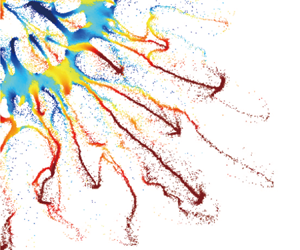Article contents
Multiscale understanding of structural effect on explosive dispersal of granular media
Published online by Cambridge University Press: 14 November 2024
Abstract

Explosive dispersal of granular media widely occurs in nature across various length scales, enabling engineering applications ranging from commercial or military explosive systems to the loss prevention industry. However, the correlation between the explosive dispersal behaviour and the structure of dispersal system is far from completely understood, thereby compromising the prediction of the explosive dispersal outcome resulting from a specific dispersal system. Here, we investigate the dispersal behaviours of densely packed particle rings driven by the enclosed pressurized gases using coarse-grained computational fluid dynamics–discrete parcel method. Distinct dispersal modes emerge from the dispersal systems with vastly varying sets of the macro- and micro-scale structural parameters in terms of the dispersal completeness and the spatial uniformity of the dispersed mass. Further investigation reveals the variation in the dispersal modes arises from the collective effects of multiscale gas–particle coupling relationships. Specifically, the macroscale coupling dictates the cyclic momentum/energy transfer between gases and particle ring as an entirety. The mesoscale coupling relates to the inter-pore gas filtration through the thickness of the particle ring, leading to the mass/energy reduction of the explosive source. The microscale coupling involves the individual particle dynamics influenced by the local flow parameters. A persistent macroscale coupling results in an incomplete dispersal which takes the form of an aggregated annular band, whereas the meso- and micro-scale couplings alter the macroscale coupling to a different extent. By incorporating the effects of the variety of structural parameters on the multiscale gas–particle coupling relationships, a non-dimensional parameter referred to as the modified mass ratio is constructed, which shows an explicit correlation with the dispersal mode. We proceed to establish a dispersal ring model in the continuum frame which accounts for the macro and meso-scale coupling effects. This model proves to be capable of successfully predicting the ideal and validated failed dispersal modes.
Information
- Type
- JFM Papers
- Information
- Copyright
- © The Author(s), 2024. Published by Cambridge University Press
References
- 1
- Cited by


